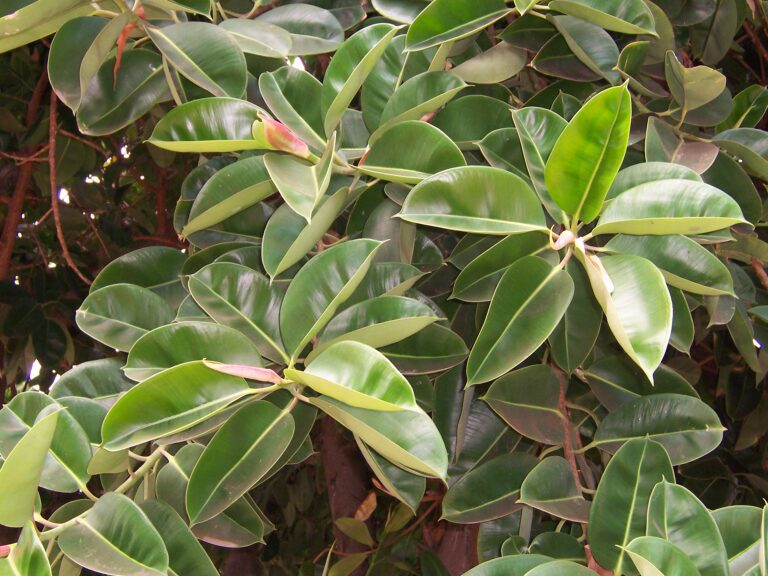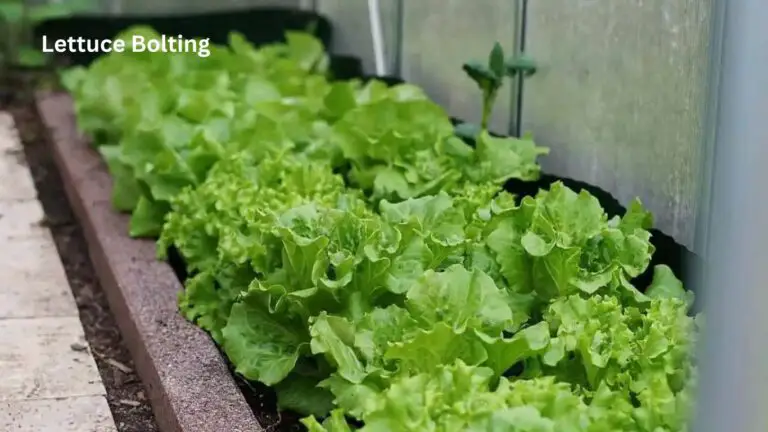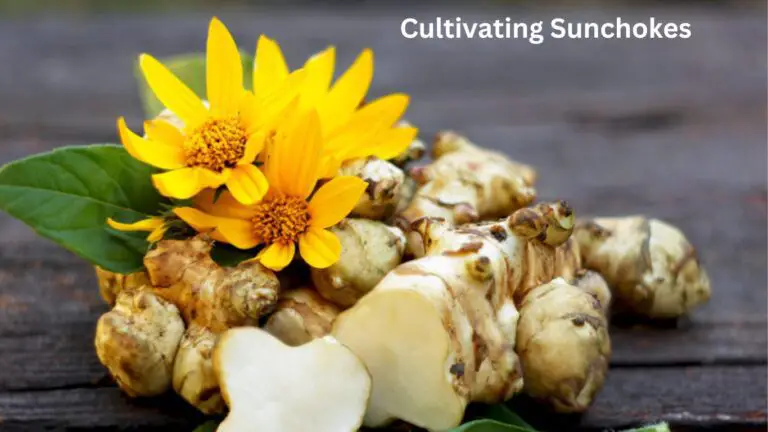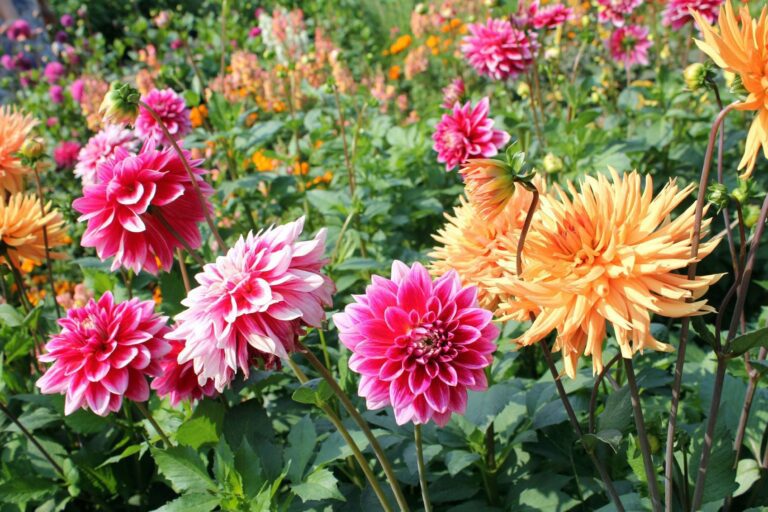Septoria Leaf Spot: What It Is, How to Dodge It, and How to Heal It
Table of Contents
I. Introduction to Septoria Leaf Spot
Introduction to Septoria Leaf Spot
Septoria leaf spot is a common fungal disease that affects a wide range of plants, causing significant damage and yield loss in both garden and crop production settings. This destructive disease is caused by the fungus Septoria lycopersici, which primarily affects members of the Solanaceae family, such as tomatoes and potatoes. The fungus overwinters in plant debris and soil, and spreads through rain splashes, wind, and gardening tools, making it a persistent and challenging problem for gardeners and farmers alike.
Septoria leaf spot is characterized by the appearance of small, circular or angular spots that develop on the leaves, stems, and fruits of infected plants. These spots typically have a dark brown or black color with a yellow halo surrounding them, giving an unmistakable visual cue to diagnose the disease. As the infection progresses, the spots coalesce and expand, causing the affected leaves to yellow, wither, and eventually die. In severe cases, the fungus can even infect the stems and fruits, leading to a complete loss of yield and plant health. Understanding the symptoms and characteristics of Septoria leaf spot is crucial for early detection and effective management of this troublesome disease.
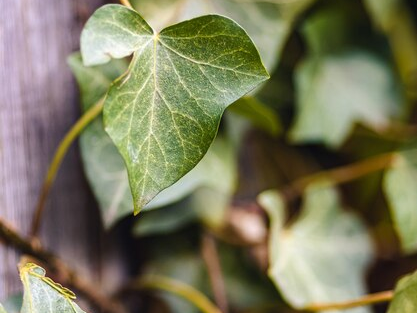
2. Identifying Septoria Leaf Spot: Symptoms and Characteristics
Septoria leaf spot is a common disease that affects a wide range of plants, including vegetables, fruits, and ornamentals. Identifying this fungal infection early on is crucial for effective management. One of the key symptoms of septoria leaf spot is the appearance of small, circular lesions with dark brown or black centers and lighter brown margins. These lesions often develop on the lower leaves of the plant and can spread upward as the disease progresses. Another characteristic feature is the presence of tiny, black fruiting bodies called pycnidia within the lesions. These pycnidia contain spores that can be easily spread by wind, rain, or human activity.
In addition to the distinctive lesion patterns, plants affected by septoria leaf spot may also exhibit other signs of infection. These include leaf yellowing, wilting, and premature defoliation. Infected leaves may develop a scorched appearance, with necrotic areas extending beyond the margins of the lesions. It is important to note that the symptoms of septoria leaf spot can vary depending on the host plant and environmental conditions. Therefore, it is essential to consult a plant disease expert or refer to reputable resources to ensure accurate identification.
| Key Points | Symptoms and Characteristics |
|---|---|
| Septoria Leaf Spot | – A fungal disease caused by the pathogen Septoria lycopersici |
| Affects a variety of plants, including tomatoes | – Primarily observed on tomato plants, but can affect other crops |
| Early symptoms | – Small, dark spots with a light center appear on lower leaves |
| Spots often have a concentric ring pattern | – Characteristic appearance with rings or dark borders around the lesions |
| Spots enlarge over time | – Lesions grow and coalesce, covering larger areas of the leaf |
| Centers may become necrotic | – Darkening of the center, leading to tissue death (necrosis) |
| Infected leaves may yellow and drop | – Yellowing and premature dropping of infected leaves as the disease progresses |
| Favorable conditions | – Warm and humid weather promotes disease development and spread |
| Fungal spores spread through splashing water | – Rain or irrigation can facilitate the spread of spores to new plant surfaces |
| Prevention and management | – Use of fungicides, proper spacing for airflow, and removal of infected leaves |
| Early detection is crucial for effective control | – Regular scouting and prompt action to minimize disease impact |
This table provides a concise overview of identifying Septoria Leaf Spot, highlighting symptoms, characteristics, and management strategies for this fungal disease.
3. The Environmental Factors: Conditions That Favor Septoria Leaf Spot
Septoria leaf spot, caused by the fungus Septoria lycopersici, is a common and destructive disease that affects many plants, particularly tomatoes. Understanding the environmental factors that favor the development and spread of this disease is crucial for effective prevention and management.
One of the primary conditions that favor the growth of Septoria leaf spot is humidity. High humidity levels, especially in combination with prolonged periods of leaf wetness, provide an ideal environment for the fungal spores to germinate and infect the plant. In humid conditions, the spores can easily be splash-dispersed onto the leaves, leading to a higher risk of infection. Moreover, the prolonged leaf wetness creates a conducive environment for the fungus to thrive, resulting in increased disease severity. Proper control of humidity levels through adequate air circulation and spacing between plants can help reduce the risk of Septoria leaf spot occurrence.
Another environmental factor that contributes to the development of Septoria leaf spot is moderate temperatures. The fungus thrives in temperatures ranging from 68°F to 77°F (20°C to 25°C), which are commonly found during the growing season of many crops. These conditions facilitate the rapid growth and reproduction of the fungus, leading to an increased likelihood of infection. Additionally, cool but moist conditions during the spring and fall can further promote the development of Septoria leaf spot. Implementing management strategies, such as using appropriate shading techniques or adjusting planting schedules to avoid peak temperature and humidity periods, can help mitigate the impact of these environmental factors.

4. Prevention is Key: How to Create an Unfavorable Environment for Septoria Leaf Spot
Creating an unfavorable environment for Septoria Leaf Spot is crucial in preventing its occurrence and minimizing its impact on your plants. One key factor is to maintain proper spacing between plants. Crowded foliage and poor air circulation create ideal conditions for the disease to thrive. By allowing enough space between plants, you promote better airflow, which helps to keep leaves dry and reduces the risk of infection.
Another important aspect of prevention is practicing good sanitation measures. Regularly remove any fallen leaves, plant debris, or infected plant parts from the garden or planting area. These materials can harbor the spores of Septoria Leaf Spot and contribute to its spread. Proper disposal of these materials is essential to prevent reinfection and to limit the disease’s impact on surrounding plants. Additionally, clean any gardening tools, such as pruning shears or trimmers, that come into contact with infected plants to avoid spreading the disease.
5. Proper Planting Practices: Minimizing the Risk of Septoria Leaf Spot
Proper planting practices play a crucial role in minimizing the risk of Septoria leaf spot and ensuring the health of your plants. One of the first steps you can take is to choose disease-resistant varieties when selecting your seeds or seedlings. These varieties have been specifically bred to be less susceptible to diseases such as Septoria leaf spot, providing an added layer of protection for your plants.
In addition to selecting the right varieties, it is important to give your plants adequate space when planting them. Crowded plants can create a favorable environment for the development and spread of Septoria leaf spot. Make sure to follow the recommended spacing guidelines provided by the seed or seedling supplier, as this will help promote good air circulation and reduce humidity around your plants. Proper spacing not only reduces the risk of disease, but it also allows each plant to receive the nutrients and sunlight it needs for healthy growth.

6. Pruning and Air Circulation: Promoting Healthy Growth and Reducing Septoria Leaf Spot
Pruning and air circulation are essential practices for promoting healthy growth in plants and reducing the risk of Septoria leaf spot. By strategically pruning your plants, you can create an environment that maximizes sunlight exposure and minimizes excess moisture, both of which are key factors in preventing the development of this fungal disease.
When pruning, it is important to remove any infected or overcrowded branches. Infected branches not only provide a breeding ground for the disease but can also limit air circulation within the plant, creating a damp and favorable environment for Septoria leaf spot to spread. By removing these branches, you not only eliminate potential sources of infection but also improve air movement, allowing for faster drying of foliage after rainfall or irrigation.
Additionally, thinning out dense foliage through proper pruning practices can help improve air circulation within the plant canopy, further reducing the risk of Septoria leaf spot. When foliage is allowed to become excessively dense, it creates a microclimate that encourages the growth and spread of fungal diseases. By selectively removing branches and thinning out overly dense growth, you can improve air movement and ensure that your plants dry more quickly, making it harder for the disease to take hold.
Incorporating these pruning techniques and prioritizing air circulation will not only promote overall plant health but also reduce the likelihood of Septoria leaf spot occurring in your garden. By adopting these practices, you can create an unfavorable environment for the disease, providing your plants with the best chance of thriving. Remember, prevention is always better than cure when it comes to plant diseases, and proper pruning and air circulation are powerful tools in your arsenal against Septoria leaf spot.
| Key Points | Implications/Actions |
|---|---|
| Pruning as a preventive measure | – Remove lower leaves to reduce the risk of soil-splash infection |
| Remove lower leaves regularly | – Reduces the proximity of leaves to potentially contaminated soil |
| Prune to increase air circulation | – Enhances airflow within the plant canopy, reducing humidity and dampness |
| Good air circulation prevents disease spread | – Reduces conditions conducive to fungal development, like Septoria Leaf Spot |
| Thinning dense foliage | – Promotes light penetration and better air circulation among leaves |
| Remove crowded branches and excess foliage | – Reduces shade and creates an environment less favorable for pathogens |
| Prune to improve sunlight exposure to lower leaves | – Supports overall plant health and helps in drying wet foliage |
| Dispose of pruned material properly | – Prevents the potential spread of pathogens through infected plant material |
| Regular pruning routine is essential | – Consistent maintenance contributes to a healthier plant environment |
| Combine pruning with other disease management practices | – Integrated approach for effective control of Septoria Leaf Spot |
This table provides a concise overview of the key considerations and actions related to pruning and air circulation to promote healthy growth and reduce the risk of Septoria Leaf Spot in plants.
7. Watering Wisely: Best Practices for Irrigation and Minimizing Septoria Leaf Spot
Watering is a crucial aspect of plant care, and when it comes to minimizing Septoria Leaf Spot, adopting best practices for irrigation is essential. Overwatering can create a favorable environment for the growth and spread of the Septoria fungus, while underwatering can stress the plants and make them more susceptible to infection. To strike the right balance, it is important to understand the needs of your specific plants and adapt your watering routine accordingly.
One key principle is to water at the right time and in the right amount. Most plants prefer deep, infrequent watering rather than frequent, shallow watering. This encourages the development of deep root systems and promotes plant resilience. Additionally, watering in the morning allows the foliage to dry out during the day, reducing the moisture that can facilitate the growth of Septoria Leaf Spot. Monitoring the moisture levels in the soil using a moisture meter or conducting a finger test can help determine when it is time to water again. By following these best practices for irrigation, gardeners can minimize the risk of Septoria Leaf Spot and promote overall plant health.

8. The Role of Fertilization: Finding the Right Balance to Prevent Septoria Leaf Spot
Finding the right balance in fertilization is crucial when it comes to preventing Septoria leaf spot in your garden. While fertilizers can provide essential nutrients to plants, excessive or imbalanced use can actually promote the growth of the disease. It is important to understand the role of fertilization and how it can either hinder or help in the prevention of Septoria leaf spot.
One important aspect to consider is the nitrogen content of the fertilizer. Nitrogen is known to promote lush and vigorous growth in plants, but an excess of nitrogen can make plants more susceptible to Septoria leaf spot. High nitrogen levels lead to dense foliage, which creates a damp and humid environment that favors the growth and spread of the pathogen. Therefore, it is recommended to use a balanced fertilizer with a moderate amount of nitrogen to avoid overstimulating plant growth and reduce the risk of infection.
• Use a balanced fertilizer with moderate nitrogen content
• Excessive nitrogen promotes lush growth and increases susceptibility to Septoria leaf spot
• Dense foliage creates a favorable environment for the pathogen’s growth and spread
• Avoid overstimulating plant growth to reduce the risk of infection

9. Natural Remedies: Non-chemical Approaches to Treating Septoria Leaf Spot
Natural remedies can be a safe and effective way to manage and treat Septoria Leaf Spot, without the use of chemical interventions. While they may not eradicate the disease entirely, they can help to slow its progression and support the overall health of your plants. One such method is the use of neem oil, which acts as a natural fungicide and can help to suppress the growth of the Septoria fungus. Neem oil should be diluted with water according to the manufacturer’s instructions and sprayed onto the affected leaves. It is important to note that neem oil treatment is most effective when applied preventatively or at the first signs of infection.
Another natural approach to consider is the use of compost tea. Compost tea is a liquid fertilizer that is rich in beneficial microorganisms that can help to suppress fungal diseases, including Septoria Leaf Spot. To make compost tea, simply steep compost in water for a period of time, then strain the liquid to remove any solids. The resulting tea can be applied as a foliar spray, directly onto the leaves of affected plants. This not only helps to provide essential nutrients to the plants but also introduces beneficial microbes that can outcompete the Septoria fungus. Regular application of compost tea can aid in boosting the overall health and resilience of your plants, making them more resistant to disease.

10. Fungicides and Chemical Treatments: An Effective Solution for Septoria Leaf Spot
Fungicides and chemical treatments can be an effective solution for managing and preventing Septoria leaf spot. These products are specifically designed to target the fungal pathogen responsible for the disease and can help control its spread. When used correctly and in accordance with label instructions, fungicides can help protect plants from infection and reduce the severity of symptoms.
One commonly used fungicide for Septoria leaf spot is chlorothalonil, which acts by inhibiting fungal growth and preventing the disease from spreading further. Chlorothalonil is available in various formulations, including liquids and powders, and can be applied using sprayers. It is important to thoroughly cover the foliage, ensuring that both upper and lower leaf surfaces are treated.
Another option is azoxystrobin, a fungicide that inhibits respiration in the fungal cells, effectively suppressing the disease. Azoxystrobin is often used as a preventive measure, applied before symptoms appear or at the first sign of infection. It is available in both liquid and granular formulations.
However, it is important to note that while fungicides can be effective, their long-term use should be minimized to prevent the development of resistant strains of the pathogen. It is also crucial to rotate between different classes of fungicides to further reduce the risk of resistance. Additionally, proper timing and application techniques are key to maximizing the efficacy of these chemical treatments.
11. Proper Disposal: Preventing the Spread of Septoria Leaf Spot
Proper disposal of infected plant material is crucial in preventing the spread of Septoria leaf spot and minimizing its impact on the overall health of your garden. Infected leaves, stems, and fruits should be carefully removed and disposed of to prevent the disease from spreading to other plants.
One effective method is to collect the infected plant material in a plastic bag and seal it tightly. This will prevent any spores or fungal fragments from escaping and infecting nearby plants. It is important not to compost or use infected material in your garden, as this could lead to the disease spreading further.
Instead, consider disposing of the infected plant material in the regular trash or, if available, in a designated green waste bin. This ensures that the infected material is properly contained and disposed of in a way that minimizes the risk of contamination. By following these proper disposal practices, you can play an important role in preventing the spread of Septoria leaf spot and protecting the health of plants in your garden or farm.
12. Managing Septoria Leaf Spot in Crop Production: Tips for Farmers and Gardeners
Managing Septoria leaf spot in crop production is essential for farmers and gardeners to ensure healthy and productive plants. This fungal disease can cause significant yield losses if not properly managed. One of the key strategies in combating Septoria leaf spot is the use of resistant varieties. By selecting and planting resistant cultivars, farmers and gardeners can significantly reduce the risk of infection and limit the spread of the disease within their crops.
In addition to selecting resistant varieties, implementing good cultural practices is crucial for managing Septoria leaf spot. Proper crop rotation can help break the disease cycle by interrupting the pathogen’s survival and reducing its population in the soil. Farmers and gardeners should avoid planting susceptible crops in the same location consecutively, as this increases the chances of infection. Instead, they should rotate with non-host plants to minimize the risk of Septoria leaf spot.
13. Seeking Professional Help: When and How to Involve an Expert in Treating Septoria Leaf Spot
When facing a severe case of Septoria leaf spot that is resistant to conventional treatment methods, it may be necessary to seek the assistance of a professional. A plant pathologist or a horticulturist with expertise in fungal diseases can provide valuable guidance in treating Septoria leaf spot. These experts have a deep understanding of the fungus’s lifecycle, its susceptibility to various treatments, and the most effective control measures.
To involve an expert in treating Septoria leaf spot, start by gathering as much information as possible about the symptoms, characteristics, and environmental conditions in your garden or field. Document any previous treatments you have attempted and their outcomes. This information will be crucial in helping the expert assess the situation and provide appropriate recommendations.
When consulting an expert, it is important to be open to their suggestions and willing to implement their recommended strategies. They may suggest chemical treatments, fungicides, or other specialized techniques that require specific knowledge and equipment. By involving an expert, you can benefit from their experience, insights, and resources, leading to more effective and targeted treatment strategies for combating Septoria leaf spot.
What are the benefits of seeking professional help for treating Septoria Leaf Spot?
Seeking professional help for treating Septoria Leaf Spot can provide several benefits. Experts have in-depth knowledge and experience in identifying the disease, determining the best treatment options, and implementing effective strategies. They can also provide guidance on preventive measures and offer valuable advice specific to your situation.
How do I know when it is necessary to involve an expert in treating Septoria Leaf Spot?
Involving an expert in treating Septoria Leaf Spot is recommended when the disease persists despite your efforts to control it. If you have tried various treatments and preventive measures without success, consulting a professional can help diagnose the underlying issue and provide targeted solutions.
How can I find a professional expert to help me with Septoria Leaf Spot?
To find a professional expert in treating Septoria Leaf Spot, you can start by contacting your local agricultural extension office or plant disease diagnostic laboratory. These organizations often have knowledgeable staff who can provide guidance or refer you to qualified professionals in your area. Additionally, seeking recommendations from experienced gardeners, farmers, or horticultural societies can also lead you to reputable experts.
What should I expect during a consultation with a professional for treating Septoria Leaf Spot?
During a consultation with a professional for treating Septoria Leaf Spot, you can expect a thorough assessment of your plants and the severity of the disease. The expert will ask questions about your gardening or farming practices, examine environmental factors, and may collect samples for laboratory analysis. Based on the findings, they will discuss treatment options, recommend specific products or techniques, and provide instructions on how to implement them effectively.
How much does it cost to involve a professional in treating Septoria Leaf Spot?
The cost of involving a professional in treating Septoria Leaf Spot can vary depending on various factors, such as the location, the extent of the disease, and the specific services provided. It is advisable to inquire about the fees or charges upfront when contacting professionals to get an idea of the costs involved.
Can a professional help me prevent future occurrences of Septoria Leaf Spot?
Yes, a professional can help you prevent future occurrences of Septoria Leaf Spot. They can assess your gardening or farming practices, identify any vulnerabilities in your setup, and provide recommendations to create an unfavorable environment for the disease. They can also advise on proper planting practices, pruning techniques, irrigation methods, and other preventive measures specific to your situation.
Are there any additional resources or support that professionals can provide in treating Septoria Leaf Spot?
Yes, professionals can often provide additional resources and support in treating Septoria Leaf Spot. They may offer educational materials, workshops, or online resources to further educate you on the disease and its management. They can also provide ongoing support and guidance, answering any questions or concerns you may have throughout the treatment process.

Beck Wakeford is a dedicated writer at SouthElMonteHydroponics, with a fervent enthusiasm for agriculture and technological innovation. Armed with a degree in Agricultural Engineering from a leading university, Beck specializes in hydroponic systems design, automation, and optimization. Their passion for merging traditional farming with cutting-edge technology drives them to explore novel solutions for sustainable food production. Beck’s expertise and keen interest in the intersection of engineering and agriculture make them a valuable asset in the quest for efficient and eco-friendly farming practices. Through their writing, Beck aims to inspire others to embrace the potential of hydroponics in shaping a more sustainable future.

